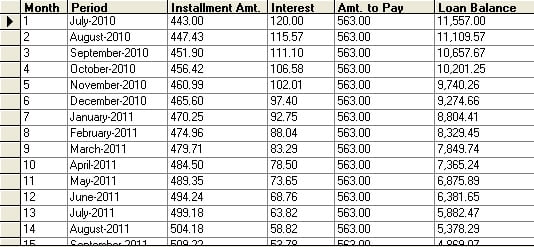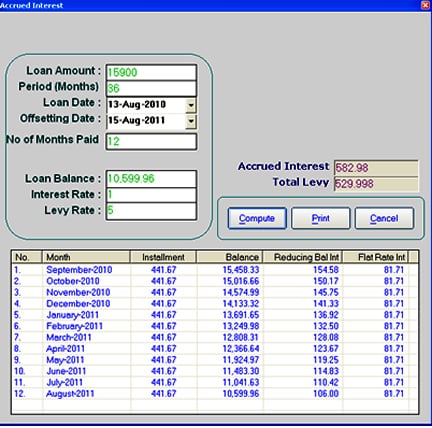Hi all,
I am designing a program to calculate accrued interest on a loan. the way to go about this is first, u generate a full repayment schedule of the loan using the principle and the duration. then u calculate the interest per month using interest reducing balance method (e.g. 1% of remaining loan balance per month.) then u calculate the actual interest paid every month by the client upto date. then calculate the total interest on reducing balance and subtract from the actual interest paid to date. That should be my accrued interest. that aside, my problem is that i cant get vb6 to generate a repayment schedule given the loan start date showing the total months and their respective payments. e.g.
no month year installment balance
1 january 2010 1,000 9,000
2 february 2010 1,000 8,000
3 march 2010 1,000 7,000
4


